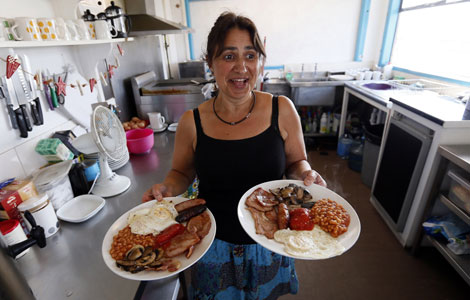Design team's 'Urban Accordion' vies for space in New York
Updated: 2013-09-27 11:55
By Caroline Berg in New York (China Daily)
|
||||||||
A group of 12 friends/co-workers currently scattered across New York, the Chinese mainland, Taiwan and Thailand are collaborating through Google Hangouts, e-mail and Skype, to design a dream "accordion-style" city that may be showcased in New York next summer.
The group, known as "afoam," is one of five finalists in this year's Figment arts festival design competition, which will select a winner by Halloween for a City of Dreams Pavilion to be built on Governors Island and open to the public between June and September 2014.
"We tried to think about the dream situation that we want to be in New York City," afoam designer Yaya Wang told China Daily about the group's Urban Accordion project. "The accordion structure resembles the blocks in the city, and we thought it would be nice if the blocks could accommodate the needs of the community and open up the spaces for more people."
This summer, the Figment project teamed with the Emerging New York Architects Committee of the American Institute of Architects New York Chapter and the Structural Engineers Association of New York to host a competition to design and construct Figment's fourth annual pavilion on Governors Island.
Figment is a free participatory arts event held in multiple cities in the US and Australia that attracts tens of thousands of participants each year. The event aims to challenge artists and local communities in finding new ways to create, share, think and dream. Figment is a not-for-profit organization entirely funded by grants and individual donations, and accepts no corporate sponsorship of any kind.
Afoam is a New York-based team of 12 young designers, all of whom graduated from Syracuse University in New York. The team collaborates on projects across the fields of art, architecture, urbanism and graphic design, among others.
"We're all from different backgrounds," afoam designer Xiao Chen told China Daily. "I think how our cultural roots inspire us contributes to all these different kinds of ideas."
The afoam team includes Lina Bondarenko, Xiao Chen, Sunchung Min, Mario Mohan, Marvin Nardo, Michael Nartey, Wei-Yi Tseng, Tanawat Vichaiwatanapanich, Yaya Wang, Andrew Weigand, Wanjing Xiao, and Ye Zhang.
"Our present city is overrun by private buildings, limiting access to public space," the afoam team wrote in its project statement. "Urban Accordion is a microcosm of an alternate urban condition."
The design includes four fabric open blocks that expand and contract, which creates different levels of enclosure to suit a range of programming. The team wrote that the space contained by the structures forms a larger communal area for events and chance encounters between disparate programs.
"[Urban Accordion is] a flexible assembly for serendipity and public events that fluctuates to meet users' demands," the team wrote in its statement.
Andrew Weigand, afoam designer, said the team has been working with a group of curators and a structural engineer on the project.
"All told, we're in communication with a group of nearly 30 people, which is tough to manage," Weigand told China Daily. "But between online collaboration tools, a lot of phone time and video conferencing, it's worked out pretty well."
For the programming afoam hopes to incorporate in its accordion design, Weigand said the team has partnered with 12-15 different artists, designers, businesses, musicians, performers, and fitness groups.
"We're looking for a way to present how our present city will become a city of tomorrow - a city of dreams," Weigand said. "We're looking at all these different ways to improve the city, and getting the broadest range of interests from the audiences we'll see at Governors Island, but also putting that into a framework of how we'll see our future cities."
Weigand said the design requires very little infrastructure and takes into account resiliency against ecological disruption and storms. The materials include plastic meshes and wood that the team plans to reclaim from construction sites around the city. Weigand said a group of four to six people could move the structure around, and the frames could expand and contract depending on the demands of the user.
In addition to afoam's Urban Accordion, finalists include ArtCloud by Poland-based design team IKAR, Dreamcatcher by Brooklyn-based ManifoldArchitectureStudio, Governor's Cup by New York-based CDR Studio with Sustainable Engineering Services, and MOBI water tower pavilion by New York-based Studio V Architecture with FTL Design Engineering Studio and Plaxall.
Since the Figment competition series began in 2010, entrants have had to create a pavilion that has zero environmental impact and serves as a model of an innovative and truly sustainable design and construction.
Ann Ha and Behrang Behin's Living Pavilion design, consisting of a 10-foot tall structure made of recycled milk crates planted with both sun and shade-friendly growing surfaces, won Figment's first annual competition in 2010,
New York-based design team Bittertang's Burble Bup, in which strangers are meant to lounge and mingle within the structure's earthen walls and lay under a bubble-like ceiling that is constantly shifting colored light, won in 2011.
Last year's winning pavilion was Studio Klimoski Chang Architect's Head in the Clouds. The structure's framework was made from recyclable 1.5-inch aluminum tubes that use less material and are easier to transport than more traditional materials like wood, and the cloud-like structure was made of 53,780 milk jugs.
carolineberg@chinadailyusa.com
(China Daily USA 09/27/2013 page10)
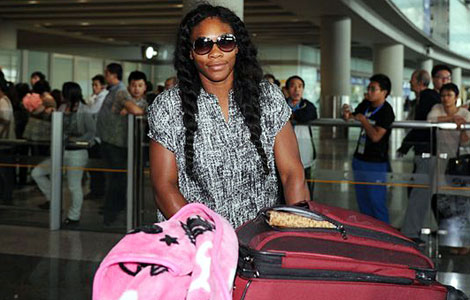
 Serena Williams back to Beijing for new crown
Serena Williams back to Beijing for new crown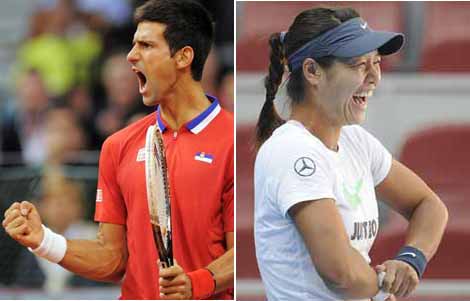
 'Battle of the sexes' to start China Open
'Battle of the sexes' to start China Open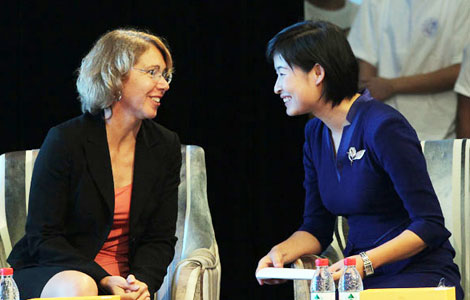
 US astronaut praises China's space program
US astronaut praises China's space program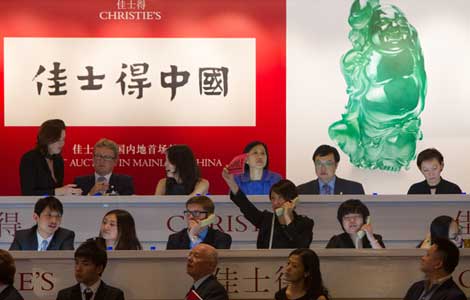
 Christie's holds inaugural auction
Christie's holds inaugural auction
 Aviation gains from exchanges
Aviation gains from exchanges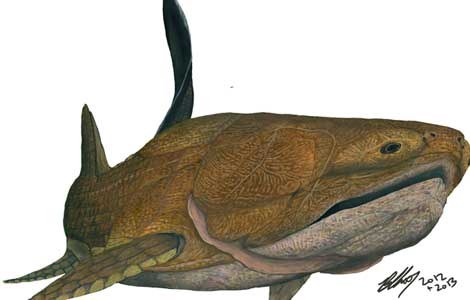
 Early fish ancestor found
Early fish ancestor found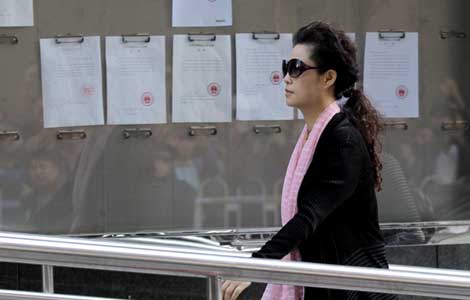
 Singers' son sentenced to 10 years for rape
Singers' son sentenced to 10 years for rape
 Djokovic announces engagement to girlfriend
Djokovic announces engagement to girlfriend
Most Viewed
Editor's Picks

|
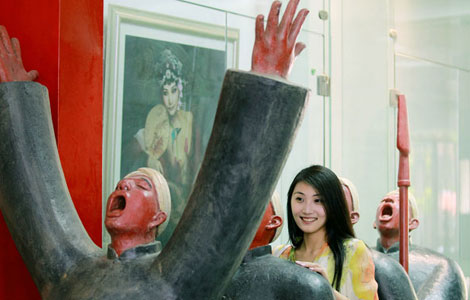
|

|

|

|

|
Today's Top News
US arms sales to Taiwan still sticking point
Can the 'Asian pivot' be saved?
Trending news across China
Overseas entrepreneurs connect with reform
Russia to guard Syria chemical weapon destruction
Interpol issues arrest notice for 'white widow'
US astronaut praises China's space program
Wang, Kerry meet second time
US Weekly

|

|


